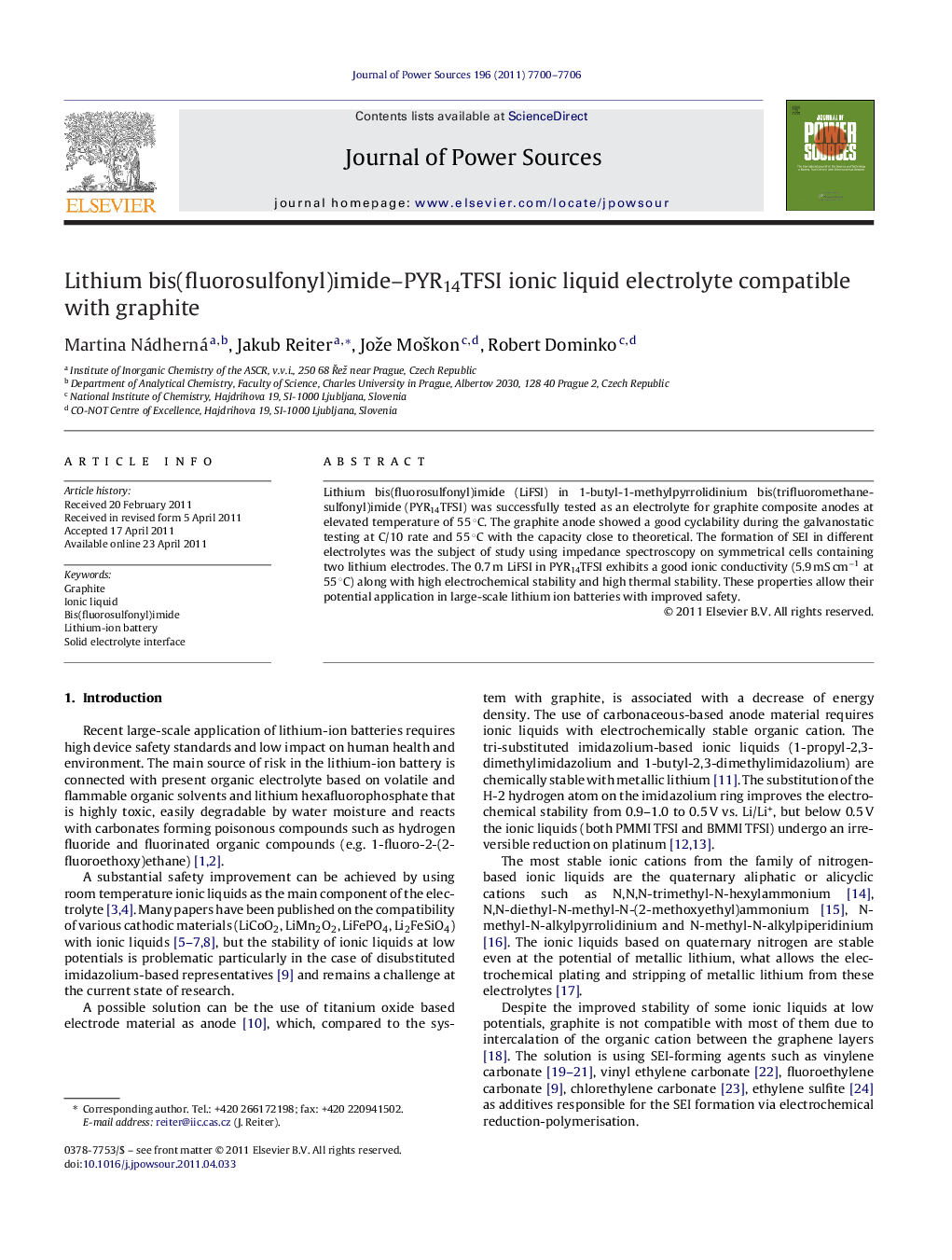| Article ID | Journal | Published Year | Pages | File Type |
|---|---|---|---|---|
| 1293392 | Journal of Power Sources | 2011 | 7 Pages |
Lithium bis(fluorosulfonyl)imide (LiFSI) in 1-butyl-1-methylpyrrolidinium bis(trifluoromethanesulfonyl)imide (PYR14TFSI) was successfully tested as an electrolyte for graphite composite anodes at elevated temperature of 55 °C. The graphite anode showed a good cyclability during the galvanostatic testing at C/10 rate and 55 °C with the capacity close to theoretical. The formation of SEI in different electrolytes was the subject of study using impedance spectroscopy on symmetrical cells containing two lithium electrodes. The 0.7 m LiFSI in PYR14TFSI exhibits a good ionic conductivity (5.9 mS cm−1 at 55 °C) along with high electrochemical stability and high thermal stability. These properties allow their potential application in large-scale lithium ion batteries with improved safety.
► Safer and greener electrolyte for lithium-ion batteries. ► Reversible lithium intercalation from ionic liquid into graphite. ► Cyclability of graphite at C/10 rate and 55 °C with the capacity close to theoretical. ► The formation of SEI in different electrolytes studied by impedance spectroscopy.
